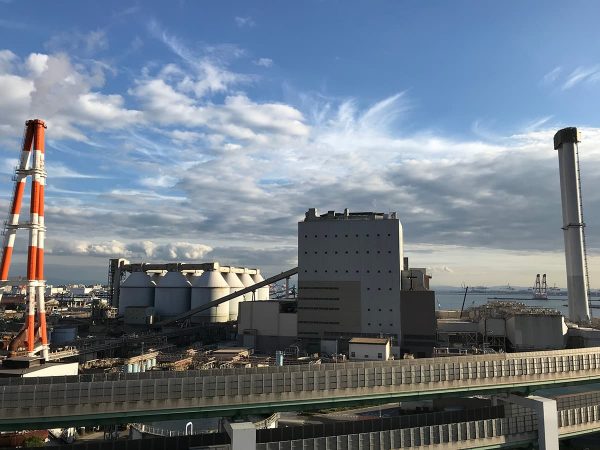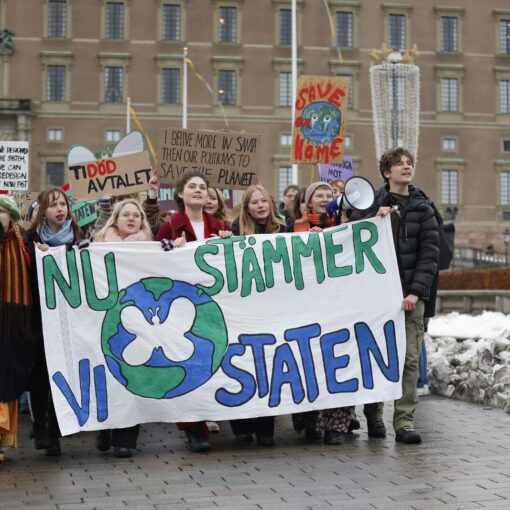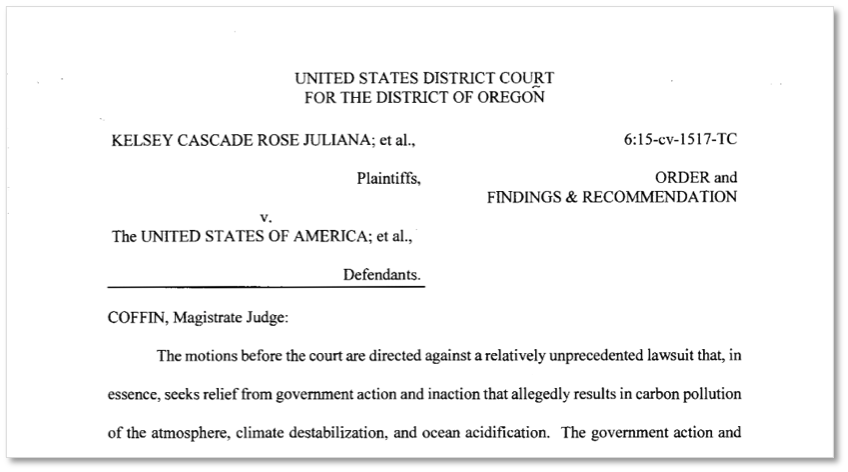By Yumeno Grace Nishikawa, LLM*

The Supreme Court of Japan may soon weigh in on a growing field of climate litigation in Japan against coal-fired power plants. On May 6, 2022, the Citizens’ Committee on the Kobe Coal-Fired Power Plant filed an appeal to Japan’s Supreme Court in Citizens’ Committee on the Kobe Coal-Fired Power Plant v. Japan, their case challenging the legality of a governmental approval that allows for the construction and operation of new coal-fired power plants. This will be the first climate change case heard before the Supreme Court.
Through May 2022, all existing climate litigation cases in Japan concern the construction or operation of coal-fired power plants and refer to citizens’ attempts to stop the use of coal. This blog post provides an overview and analysis of climate litigation in Japan as a tool to induce a change in the government’s policy toward coal-fired power plants.
Japan’s climate change context
Japan is the world’s 5th largest CO2 emitter, with 85 % of emissions deriving from the energy sector, which heavily relies on the use of coal-fired power plants. Japan’s dependency on fossil fuels had been slightly declining until 2010. But the country changed course as a result of the 2011 Tohoku Earthquake and Tsunami, which led to the forced shutdown of nuclear power plants and greater reliance on fossil fuels. As a result, Japan’s CO2 emissions increased, peaking in 2013. As of May 2022, there are 163 operating coal-fired power plants in Japan. Eight additional power plants are currently planned or under construction.
In its Nationally Determined Contribution, Japan has committed to reducing GHG emissions by 46% in 2030 from 2013 levels and achieving net zero emissions by 2050. Further, the Act on Promotion of Global Warming Countermeasures (national legislation providing the general framework concerning the adoption and implementation of measures to combat global warming) was revised in May 2021. The revised Act explicitly included the pledge for net zero by 2050. Article 2 (2) of the Act further states that citizens, the State, local authorities, business operators, and other private organizations must cooperate to achieve net zero and the objectives laid down in Article 2 (1) (a) of the Paris Agreement.
In recent years, four lawsuits and one OECD compliant procedure were filed to prevent the construction and operation of coal-fired power plants in Japan. (Judgments and English summaries are found in the Sabin Center’s Climate Change Litigation Database.)
Civil law cases
Civil lawsuits were filed in Sendai in 2017 and Kobe in 2018 by citizens against corporations that planned to build new coal-fired power plants. These are pioneering cases in calling for the prevention of environmental and health damage caused by coal-fired power plants based on the concept of personal rights (人格権), which protect a variety of fundamental interests related to physical and mental wellbeing. In both cases, the so-called greening of human rights is observed, where the citizens attempt to incorporate the interests to not have their health damaged by GHG emissions into personal rights that are commonly used as a legal basis for an injunction in civil law cases.
In September 2017, in Sendai Citizens v. Sendai Power Station, a group of citizens requested an injunction to stop the operation of the newly built coal-fired power plant. The plaintiffs initially claimed a violation of personal rights to life, bodily integrity, and health by climate change. However, this argument was withdrawn by the plaintiffs due to the low attainability of the claim. Therefore, the judgment of the first instance solely addressed the issues related to environmental pollution. In a statement of appeal, which was filed by one of the citizens in December 2020, the appellant asserted that the Sendai District Court should have considered the consequences of GHG emissions even though they could not be directly addressed as an illegal activity. In the appeal judgment, the Sendai High Court briefly touched upon the negative effects of GHG emissions on climate change and the ecosystem but denied the existence of concrete danger.
In September 2018, in Citizens’ Committee on the Kobe Coal-Fired Power Plant v. Kobe Steel Ltd., et al., a group of citizens submitted a civil law complaint requesting an injunction to stop the construction and subsequent operation of two coal-fired power plants. The plaintiffs claim that the emissions of CO2, as well as air pollutants, by the coal-fired power plants violate personal rights to life, bodily integrity, and health and the right to a peaceful life (a variant of personal rights). Based on the interpretation of personal rights, they argued that the right to a peaceful life should include the right to a stable climate (安定気候享受権) and the right to a healthy and peaceful life (健康平穏生活権), which refers to the right to live with clean air. They also addressed the incompatibility of building new coal-fired power plants with GHG reduction targets. This case is still pending before the Kobe District Court. However, one of the coal-fired power plants started operating on February 1, 2022.
Administrative complaints
Two administrative law complaints were constructed in a similar manner and requested the revocation of the Notice of Finalization by the Minister of Economy, Trade and Industry that confirmed the content of the construction plan of new coal-fired power plants. They both addressed procedural faults during the Environmental Impact Assessment (EIA), the incompatibility of the new coal-fired power plants with GHG reduction targets, and the responsibility of Japan to regulate the power generation industry based on the Electricity Business Act and Environmental Impact Assessment Act.
In November 2018, citizens in Kobe filed an administrative law complaint alongside the civil lawsuit requesting the revocation of the Notice of Finalization of the construction plan of coal-fired power plants (Citizens’ Committee on the Kobe Coal-Fired Power Plant v. Japan). The Osaka District Court and the Osaka High Court ruled that the plaintiffs lacked standing to bring the claims related to GHG emissions. Both courts took the position that the regulation of GHG emissions was a policy issue. In their opinion, the interest to not have one’s health damaged by global warming caused by GHG emissions is a general public interest and cannot be claimed by individuals. Further, the courts stated that the Notice of Finalization issued by the Minister of Economy, Trade and Industry was legal because his decision was neither a deviation from nor abuse of his discretionary power. The difference between the first instance judgment given in March 2021 and the second instance judgment of the Osaka High Court in April 2022 is that the Osaka High Court stated that the standing rules could change. The High Court stated that there is a possibility that the interests to not incur damage through GHG emissions will be legally protected in the future if there is a change in socially accepted ideas about GHG emissions. This case is now brought before the Supreme Court.
In the Yokosuka Climate Case, citizens similarly submitted an administrative law complaint requesting the revocation of the Notice of Finalization of the construction plan of coal-fired power plants in May 2019. The plaintiffs argue that Japan’s policy to continue building and operating coal-fired power plants is against the international movements towards net zero by referring to IPCC reports and the Paris Agreements (similar to arguments brought by plaintiffs in Citizens’ Committee on the Kobe Coal-Fired Power Plant v. Japan). The plaintiffs also challenge the applicability of simplified EIA procedures to the power plants in question.
In a third administrative climate case, the Market Forces, an affiliate project of an Australia-based NGO, filed a complaint against Japanese banks with the Japanese National Contact Point (NCP) based on the OECD Guidelines for Multinational Enterprises in September 2018 (Market Forces v. SMBC, MUFG and Mizuho). The NCP facilitated a mediation between the parties to discuss the issues related to the funding of coal mines in Vietnam by Japanese banks, but the procedure was concluded without reaching any agreements due to the lack of consent of the parties to further resolve the issues through mediation.
Analysis
Overall, recent attempts to use litigation to stop the construction and operation of coal-fired power plants show the difficulty to effectuate claims based on climate concerns under the Japanese legal system. In civil law, plaintiffs are aiming to expand the scope of personal rights that form a basis for an injunction under tort law. The difficulty that plaintiffs are likely to face when making a tort claim related to GHG emissions come from requirements under Japanese tort law: they must demonstrate the proof of concrete danger or the high probability of the occurrence of (health) damage. While the negative impacts of climate change are widely known, it may be still hard to say that a GHG emissions by a particular power plant alone attain the level of danger necessary for an injunctive relief.
Under administrative law, standing requirements have so far seemed to blockade the proceedings. According to the interpretation of the Osaka High Court, claims related to the regulation of GHG emissions cannot be enforced by individuals as they should be addressed as policy issues by the political branches. Furthermore, whereas the Electricity Business Act and Environmental Impact Assessment Act impose obligations on the State to make sure that the EIA is carried out appropriately and due consideration is given to environmental conservation, the exercise of regulatory powers largely depends on the discretion of the executive bodies. These difficulties represent the limitations imposed by the separation of powers on climate litigation that are also seen in other jurisdictions. On the other hand, the possibility of a change in standing rules based on a change in the social recognition related to the reduction of GHG emissions indicated by the Osaka High Court could be seen as a slow but hopeful development. The inclusion of the net zero pledge in the recent revision of the Act on Promotion of Global Warming Countermeasures may also be seen as a first step in this direction.
Conclusion
Currently, three cases, Citizens’ Committee on the Kobe Coal-Fired Power Plant v. Kobe Steel Ltd., et al., Yokosuka Climate Case, and the final appeal for Citizens’ Committee on the Kobe Coal-Fired Power Plant v. Japan, are pending. Considering the social background that still tolerates and relies on the use of coal and the burden of proof and standing challenges, a favorable decision for the plaintiffs may be difficult. However, developments in the cases are worth following as the Citizens’ Committee on the Kobe Coal-Fired Power Plant v. Japan is the first climate litigation brought before the Supreme Court and the Citizens’ Committee on the Kobe Coal-Fired Power Plant v. Kobe Steel Ltd., et al. has the potential to develop legal thinking on personal rights in the climate context.
* This blog post is part of the Sabin Center’s Peer Review Network of Global Climate Litigation and was edited by Maria Antonia Tigre. Ms. Nishikawa is the national rapporteur for Japan.
Dr. Maria Antonia Tigre is the Director of Global Climate Litigation at the Sabin Center for Climate Change Law at Columbia Law School.




